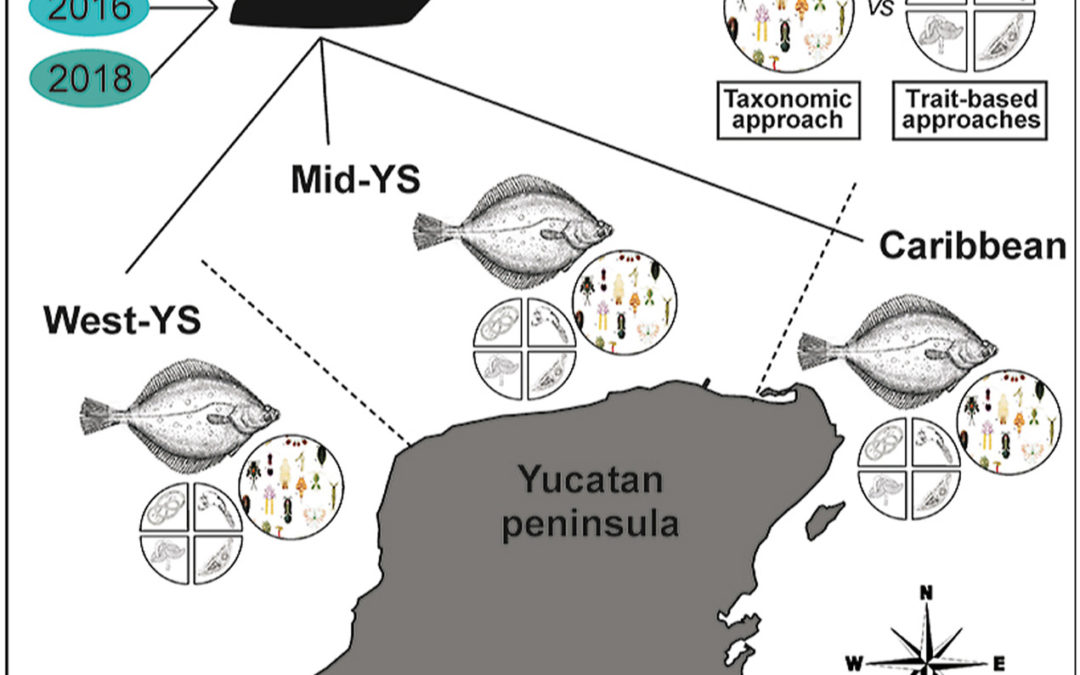Authors: Frank A. Ocaña, Lilia C. Soler-Jiménez, Ma Leopoldina Aguirre-Macedo, Víctor M. Vidal-Martínez
https://doi.org/10.1016/j.envpol.2021.117622
Abstract
We assessed the performance of taxonomic and several functional trait-based approaches in the assessment of spatial and temporal patterns of dusky flounder (Siacyum papillosum) parasite assemblages along the Yucatan shelf to determine their potential as bioindicators of marine chemical pollution. Fish specimens were collected throughout three research cruises that took place in 2015, 2016 and 2018. In addition to the traditional taxonomic approach, four trait-based approaches were performed including community-weighted means (CWM), functional trait niche (FTN), functional groups (FGs), and Rao’s functional diversity (FD). Significant spatial and temporal variations in parasite communities were detected using the taxonomic approach. In general, these variations were also reflected in the four trait-based approaches performed, indicating that changes in taxa composition and abundance also resulted in functional composition shifts. Resemblance matrices of both taxonomic and functional trait approaches were significantly correlated. Variations in taxonomic and trait-based composition using the four approaches were significantly correlated with depth, and at least one chemical pollutant variable. Feeding mode, transmission, life stage and attachment structure displayed spatial variability and significant correlations with predictor variables, which indicates that this set of attributes functions as a good surrogate for assessing variations in the functional composition of flatfish parasite communities in relation to pollution. FTN and CWM were the approaches that best detected spatio-temporal variation. CWM and FD were best suited for detecting pollution gradients. These results reveal the feasibility of using trait-based approaches to assess marine parasite communities as bioindicators of chemical pollution. Functional traits of marine metazoan parasites are as good indicators of the effect of oil pollution as taxonomic diversity. This may be a time-saving and cost-effective approach to performing environmental assessments.
Keywords: Biological trait, Parasite communities, Pollution, Syacium papillosum, Yucatan shelf



Comentarios recientes